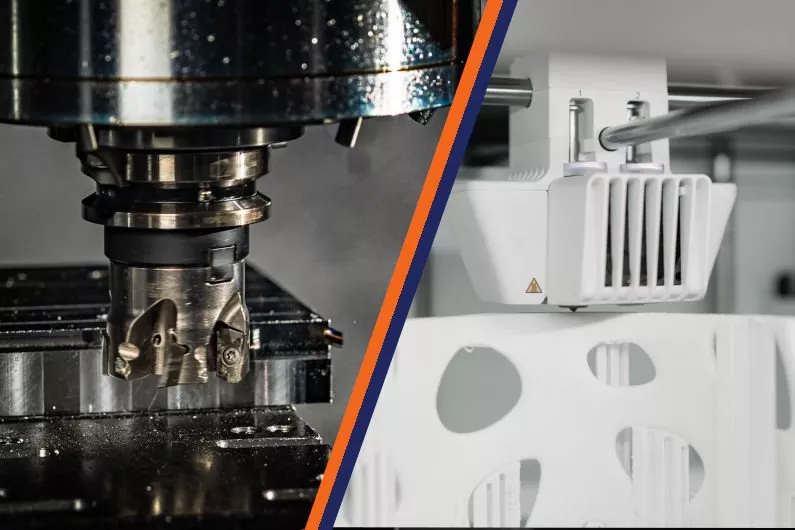CNC machining and 3D printing are leading manufacturing technologies for rapid prototyping and low-volume production and are two very different production methods. The common denominator is the ability to deliver products quickly.
Is CNC machining cheaper than 3D printing? At a high level, they use the same workflow but the conditions in terms of production time, labor, effort, parts that can be produced, materials that can be applied, production tolerances, etc. CNC machining and 3D printing are not necessarily cheaper than each other, and it is necessary to determine exactly which machining method is better suited to the design requirements of the part to be machined. Below we will discuss the cost of CNC machining and 3D printing separately. You can review these details to understand the price difference between the two methods.
Four core cost elements
CNC machines with the same work area are more expensive than 3D printers. Moreover, CNC lathes require various accessories such as cutting fluid delivery systems, specialized cutting tools, etc., which results in higher maintenance costs for CNC machines than for 3D printers. Unaffordable for businesses that need to make prototypes and small batches, 3D printing may be a cost-effective option as it allows them to create prototypes without the need for expensive equipment.
Equipment and Material Costs
Suppose you don’t consider the machine model, brand, and quality. In general, 3D printers are cheaper on average than equivalent CNC machines. In addition, 3D printing and CNC machining are just two opposite machining technologies; 3D printing is an additive machining technology, while CNC machining is a subtractive machining technology.
Therefore, from the material side, 3D printing is much more expensive than cnc manufacturing in terms of the price of certain raw materials. For example, metal wires are designed for use in new metal 3D printing technologies such as Directed Energy Deposition (DED) and metal powders used in DMLS. ABS and PP, for example, can cost up to 10 times more per kilogram of filament than raw material, depending on the polymer.

Production Costs
Energy, labor, material costs, and material waste determine production costs. Based on the current market reality, using CNC machining technology and 3D printing technology to manufacture the same part (material, design, performance, appearance, etc.), we have found that while the material cost of 3D printing is higher, the labor cost is comparatively very low, which makes 3D printing technology 30-60% cheaper than CNC machining in certain industries when it comes to parts machining.
Production speed
3D printing and CNC machining are additive and subtractive. Our research found that CNC machining has a much shorter production time than 3D printing. For example, we produced a pallet with our two technologies and tested a total production time of 2.3 hours for 3D printing and only 1.3 hours for CNC. While in this case, CNC has a definite advantage in terms of speed, 3D printing wins in terms of cost when you look at it all together. This is consistent with the common belief that CNC has a faster speed and lower cost for simple, uncomplicated parts and that 3D printing may be able to compensate for more complex designs.
Production capacity
Regarding production capabilities, CNC machining has an advantage over 3D printing in terms of scale and part size. With current technological limitations, 3D printing cannot be reliably mass-produced and can be built in smaller part sizes. In contrast, CNC machining can mass-produce parts of consistent quality and larger parts, depending largely on the design.
Conclusion.
Combining the four core factors above, to know if CNC machining is cheaper than 3D printing, you need to provide the specific part that needs to be machined to make a comparison. Different design complexities, materials applied, the performance of the design, project lead time, number of parts, etc., are all factors that affect the price. Suppose you have a part that needs to be machined by either of these two machining technologies for small-volume production or rapid prototyping, but you have not decided which one to choose because you are unsure of the price. In that case, you can contact Elimold for an estimate. Our engineers will give you advice based on years of experience.
Go to the full page to view and submit the form.
